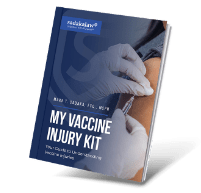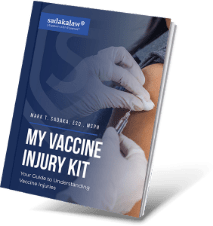It is an age-old and incredibly heated debate–the long standing fight between mercury in vaccines and whether or not it holds any link to an increased autism link. Ask anyone who feels strongly either way and it is easy to get a fight started. Since the release of a British study several years ago (which, was found to be highly flawed) the world has been in an uproar over the use of mercury in vaccinations. Despite many attempts to squelch the fury–the issue has never died down. Government health officials continue to insist that all is well–while autism rates in the U.S. continue to rise while groups like the National Autism Association continue to cry foul, and are only met with red tape and frustration.
I am not here to debate whether vaccines cause Autism. But instead to present the facts of a great debate that shows our government has a significant conflict of interest that makes it nearly impossible for anyone to get a straight answer. The issue at hand is known as a Thimerosal and it is used as a common preservative in many multi-dose medication vials. It is not typically found in single-use doses, like many children’s vaccines, but instead in the larger bottles–like the ones commonly used for mass flu vaccination clinics. Thimerosal has been linked to many health conditions and the National Autism Association (NAA) has been fighting it use in this country for many years.
The NAA claims that despite clear guidelines stating that sensitive populations–such as children, or those who are pregnant not receive Thimerosal containing vaccinations–the CDC’s advisory committee on vaccines continues to push the issue. They cite a clear conflict of interest between Dr. Jay Lieberman who works for the CDC and his affiliation with several big drug companies.
In 2007, Dr. Lieberman was assigned a presentation to focus on Thimerosal. Instead of presenting the factual clear data regarding the preservative that link it to a variety of auto-immune and other serious illnesses, he chose to take the presentation another direction and cite highly-criticized data that fails to identify any dangers with the additive. Dr. Lieberman has consulted for GlaxoSmithKline, Merck, as well as Sanofi-Pasteur, who are all key vaccine manufacturers who supply to the U.S. markets. He has also served on the speaker’s bureau for all three of these vaccine makers. It is a clear conflict of interest that ruins credibility.
Groups like the NAA have called for the removal of Thimerosal from all vaccines–the flu vaccine continues to have 25 micrograms of mercury, and according to the group, it is an unsafe amount for anyone who weighs less than 550 pounds. That is a significant number of people.
“It’s obvious this committee’s ties to the drug companies are dictating what will come to light regarding the use of mercury in vaccines,” said Claire Bothwell, NAA board chair. “When it comes to discussing Thimerosal, it’s hard to tell where the pharmaceutical industry leaves off and where the CDC begins. The blurring of these lines is not in the best interests of public health.”






